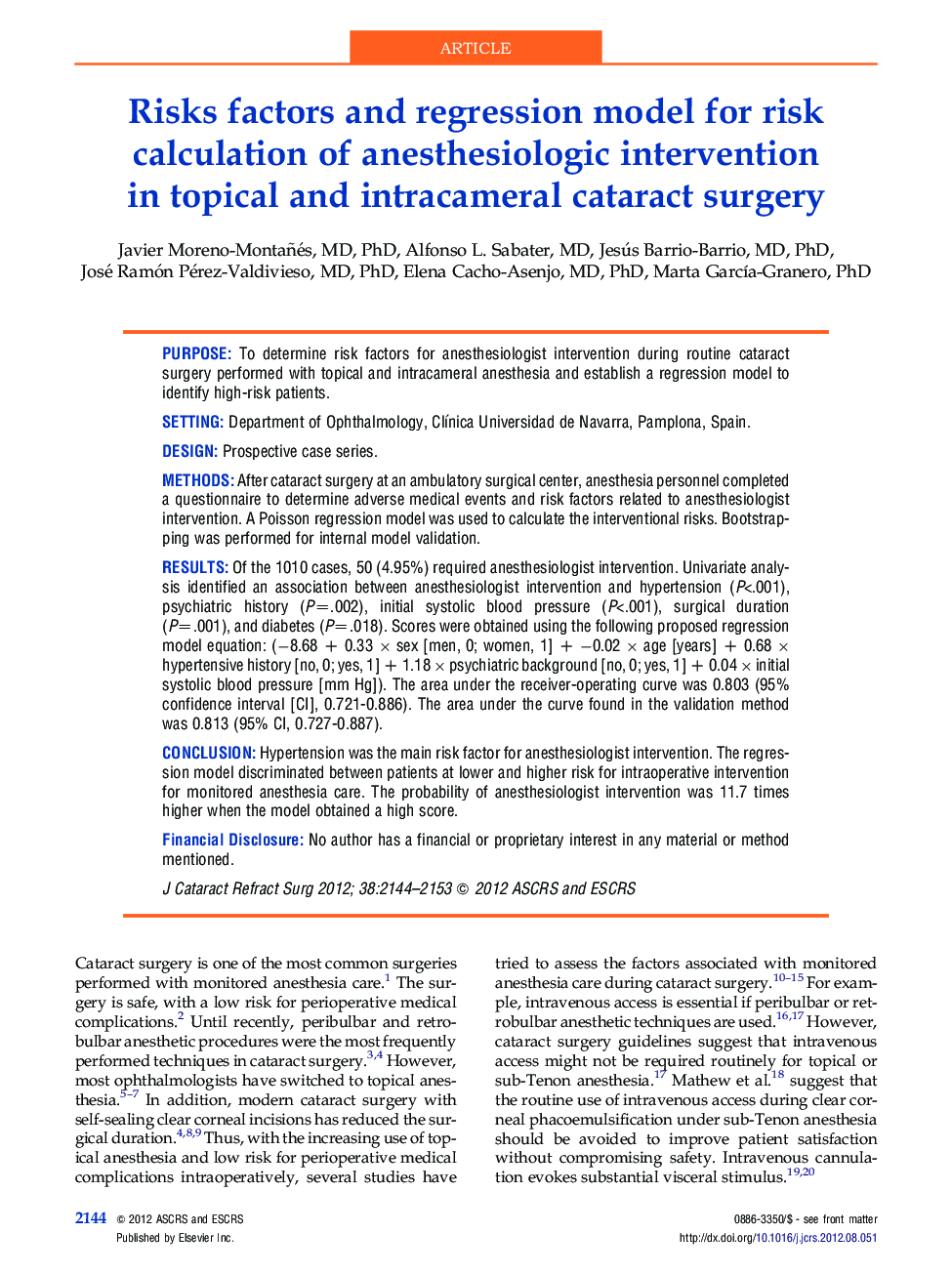| کد مقاله | کد نشریه | سال انتشار | مقاله انگلیسی | نسخه تمام متن |
|---|---|---|---|---|
| 4017765 | 1261983 | 2012 | 10 صفحه PDF | دانلود رایگان |

PurposeTo determine risk factors for anesthesiologist intervention during routine cataract surgery performed with topical and intracameral anesthesia and establish a regression model to identify high-risk patients.SettingDepartment of Ophthalmology, Clínica Universidad de Navarra, Pamplona, Spain.DesignProspective case series.MethodsAfter cataract surgery at an ambulatory surgical center, anesthesia personnel completed a questionnaire to determine adverse medical events and risk factors related to anesthesiologist intervention. A Poisson regression model was used to calculate the interventional risks. Bootstrapping was performed for internal model validation.ResultsOf the 1010 cases, 50 (4.95%) required anesthesiologist intervention. Univariate analysis identified an association between anesthesiologist intervention and hypertension (P<.001), psychiatric history (P=.002), initial systolic blood pressure (P<.001), surgical duration (P=.001), and diabetes (P=.018). Scores were obtained using the following proposed regression model equation: (−8.68 + 0.33 × sex [men, 0; women, 1] + −0.02 × age [years] + 0.68 × hypertensive history [no, 0; yes, 1] + 1.18 × psychiatric background [no, 0; yes, 1] + 0.04 × initial systolic blood pressure [mm Hg]). The area under the receiver-operating curve was 0.803 (95% confidence interval [CI], 0.721-0.886). The area under the curve found in the validation method was 0.813 (95% CI, 0.727-0.887).ConclusionHypertension was the main risk factor for anesthesiologist intervention. The regression model discriminated between patients at lower and higher risk for intraoperative intervention for monitored anesthesia care. The probability of anesthesiologist intervention was 11.7 times higher when the model obtained a high score.Financial DisclosureNo author has a financial or proprietary interest in any material or method mentioned.
Journal: Journal of Cataract & Refractive Surgery - Volume 38, Issue 12, December 2012, Pages 2144–2153